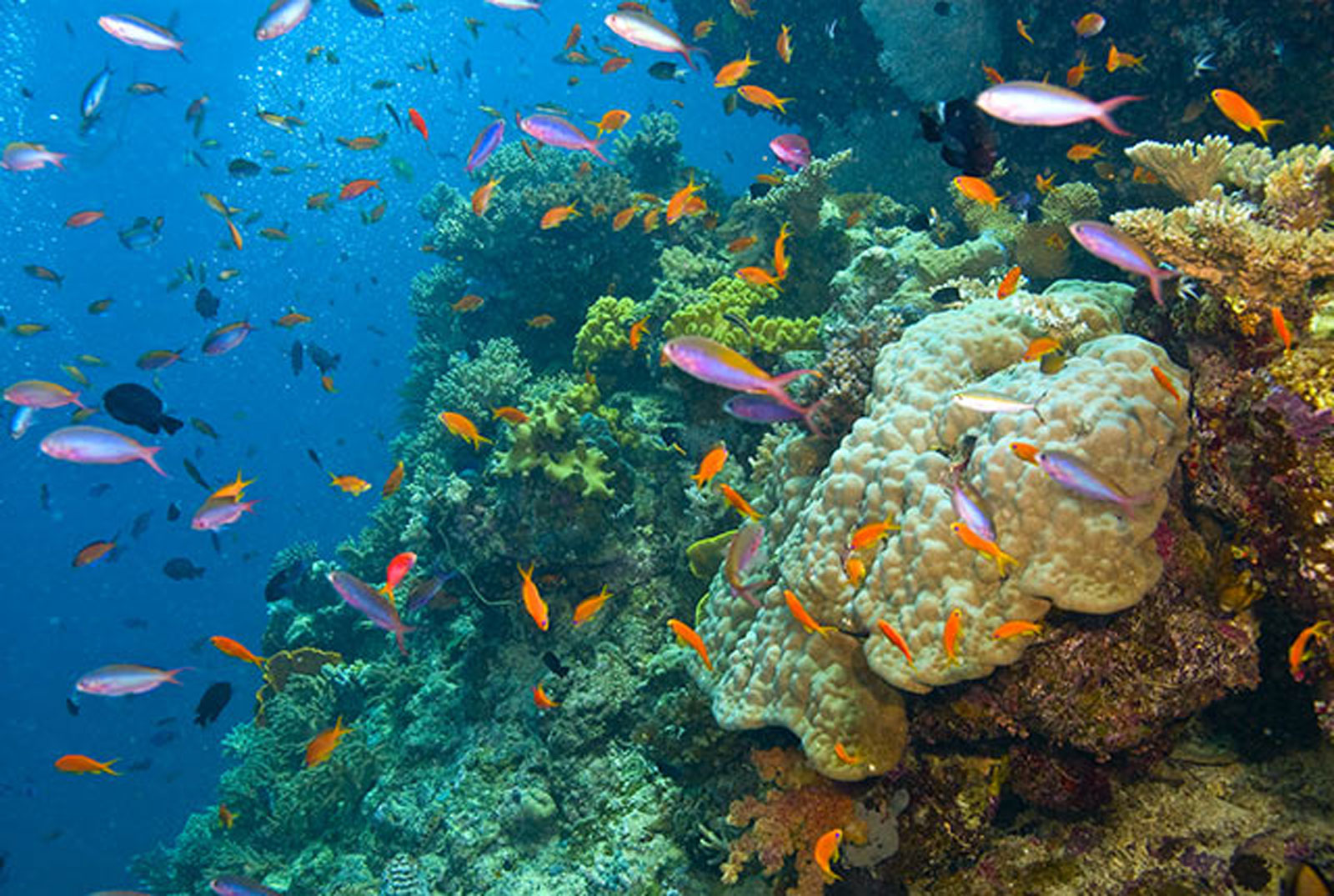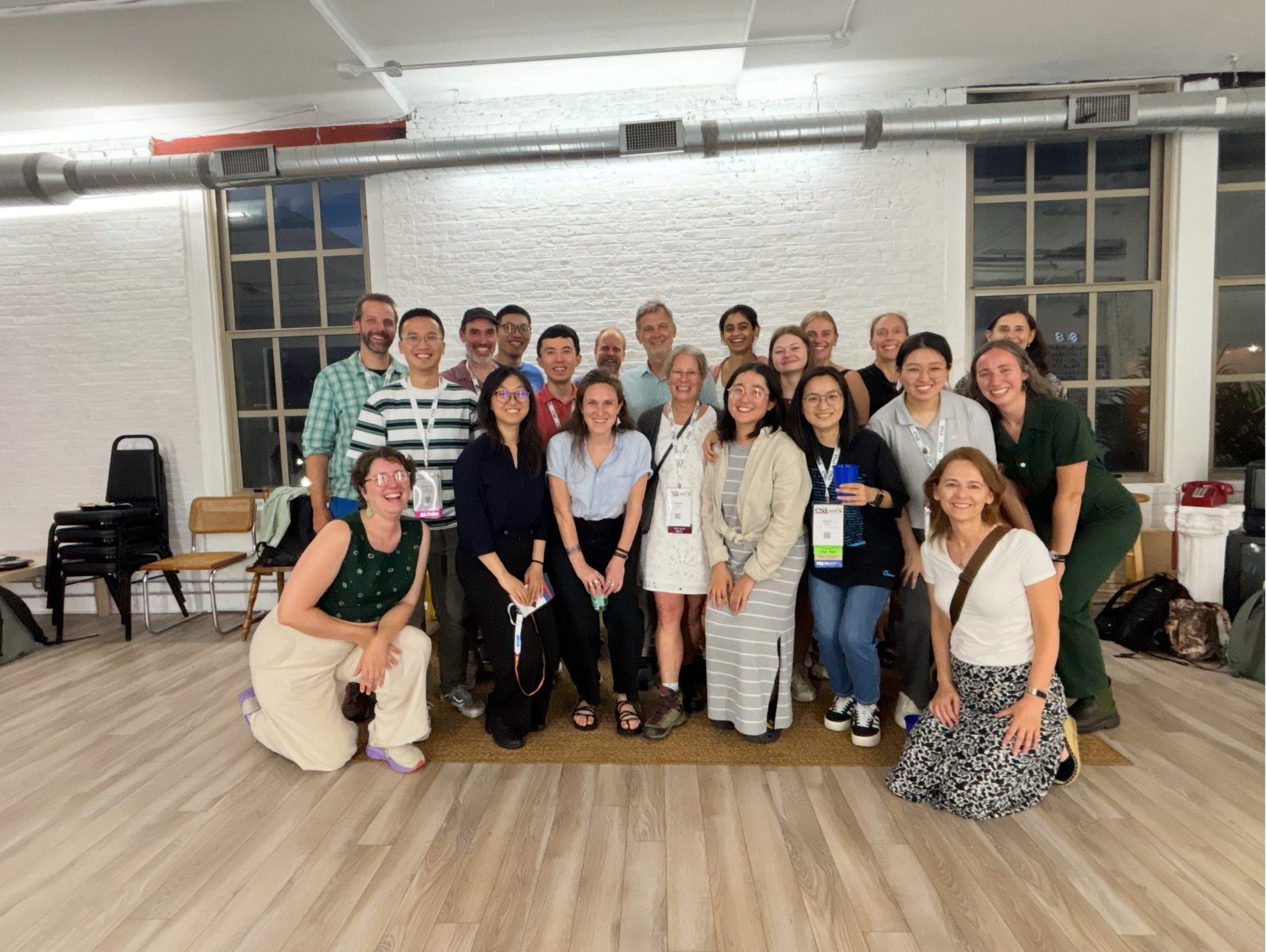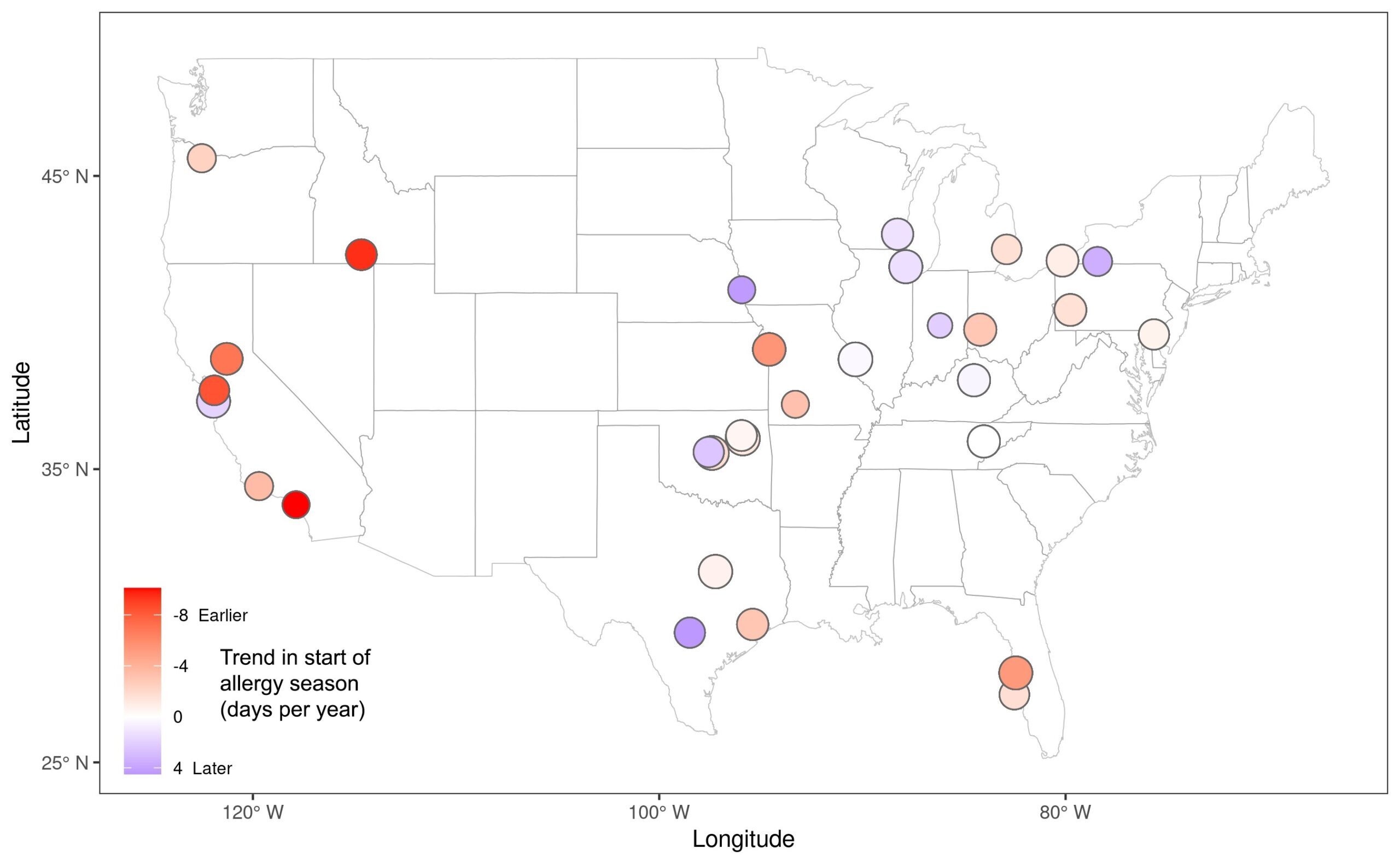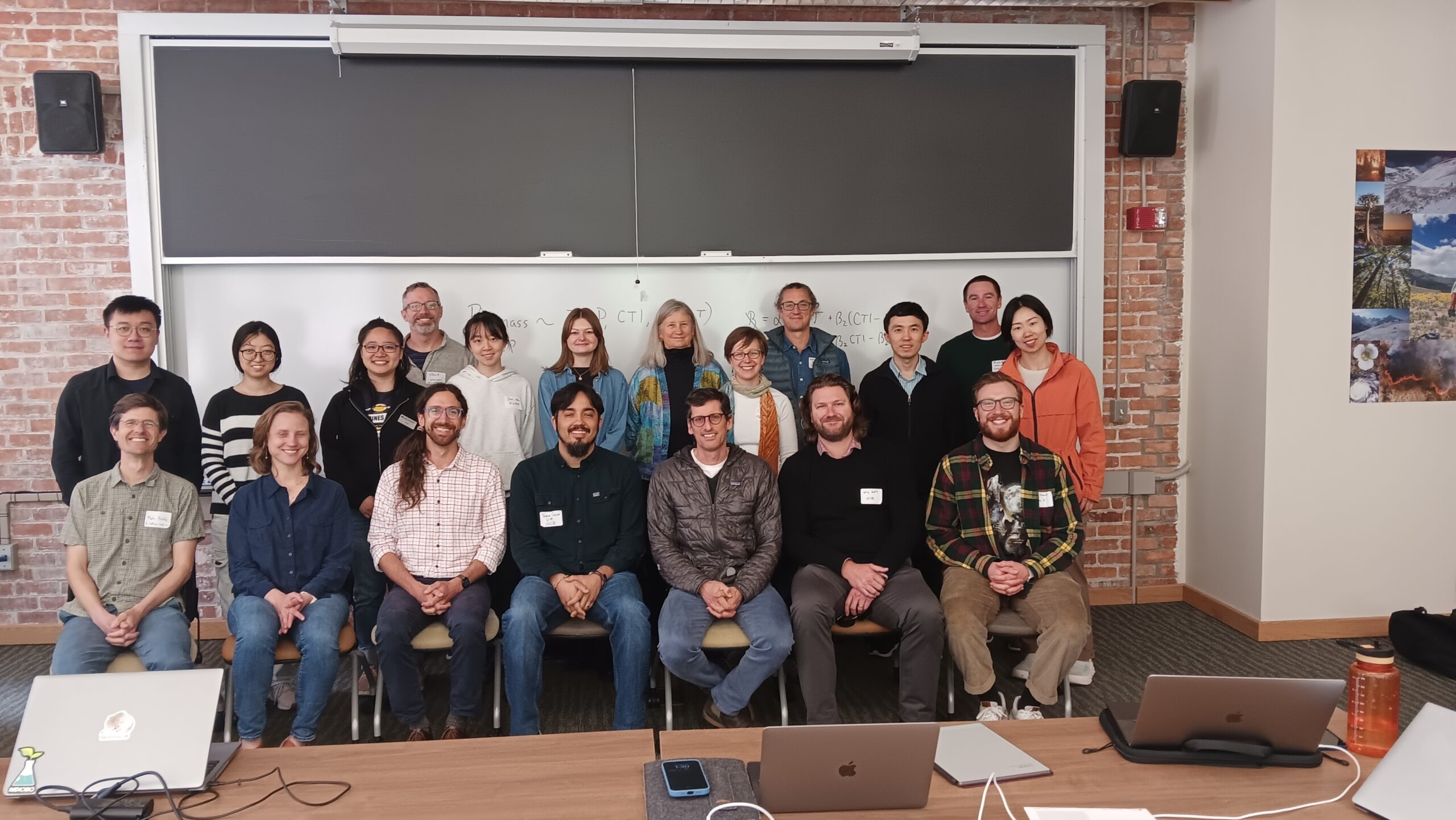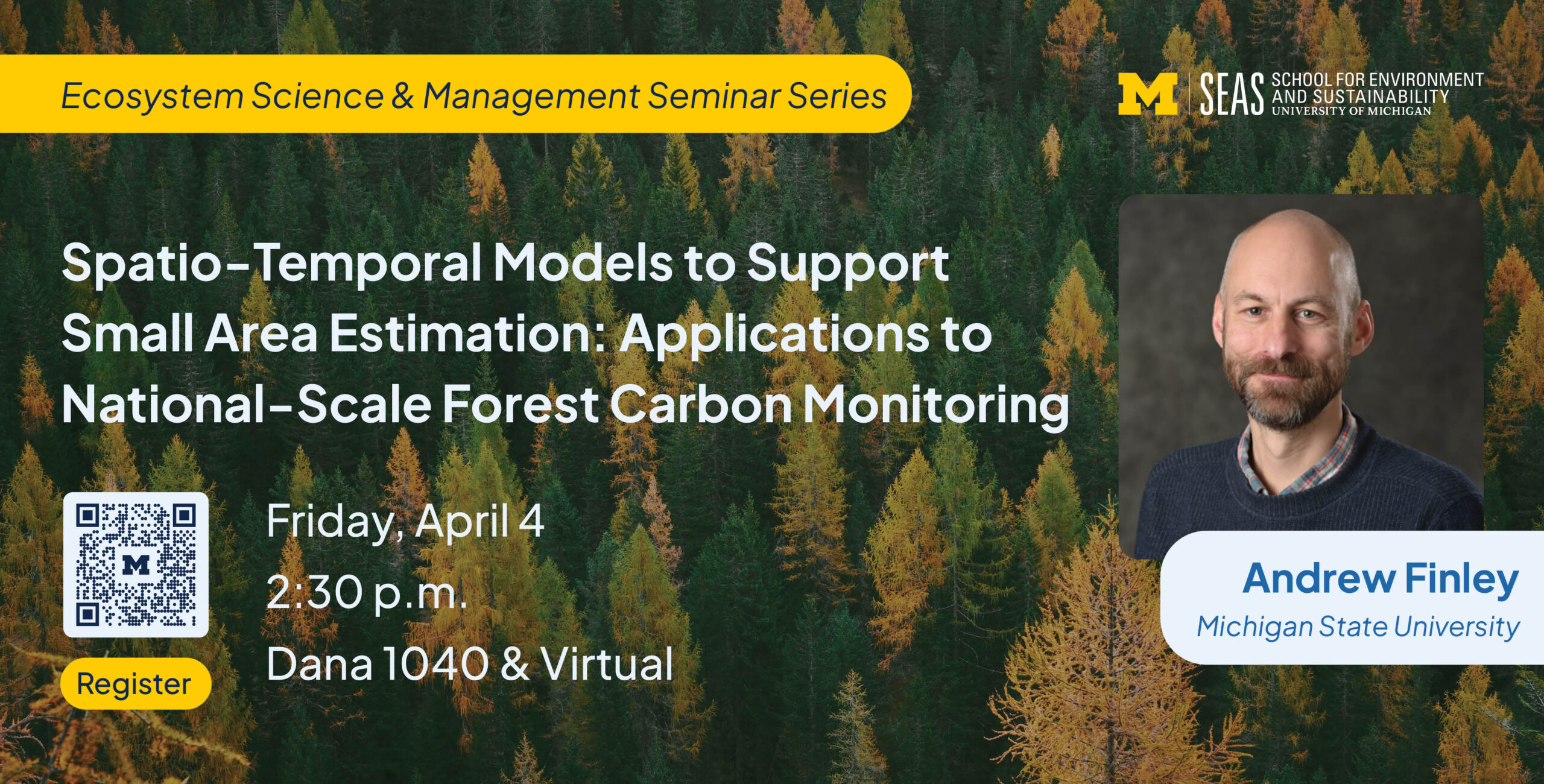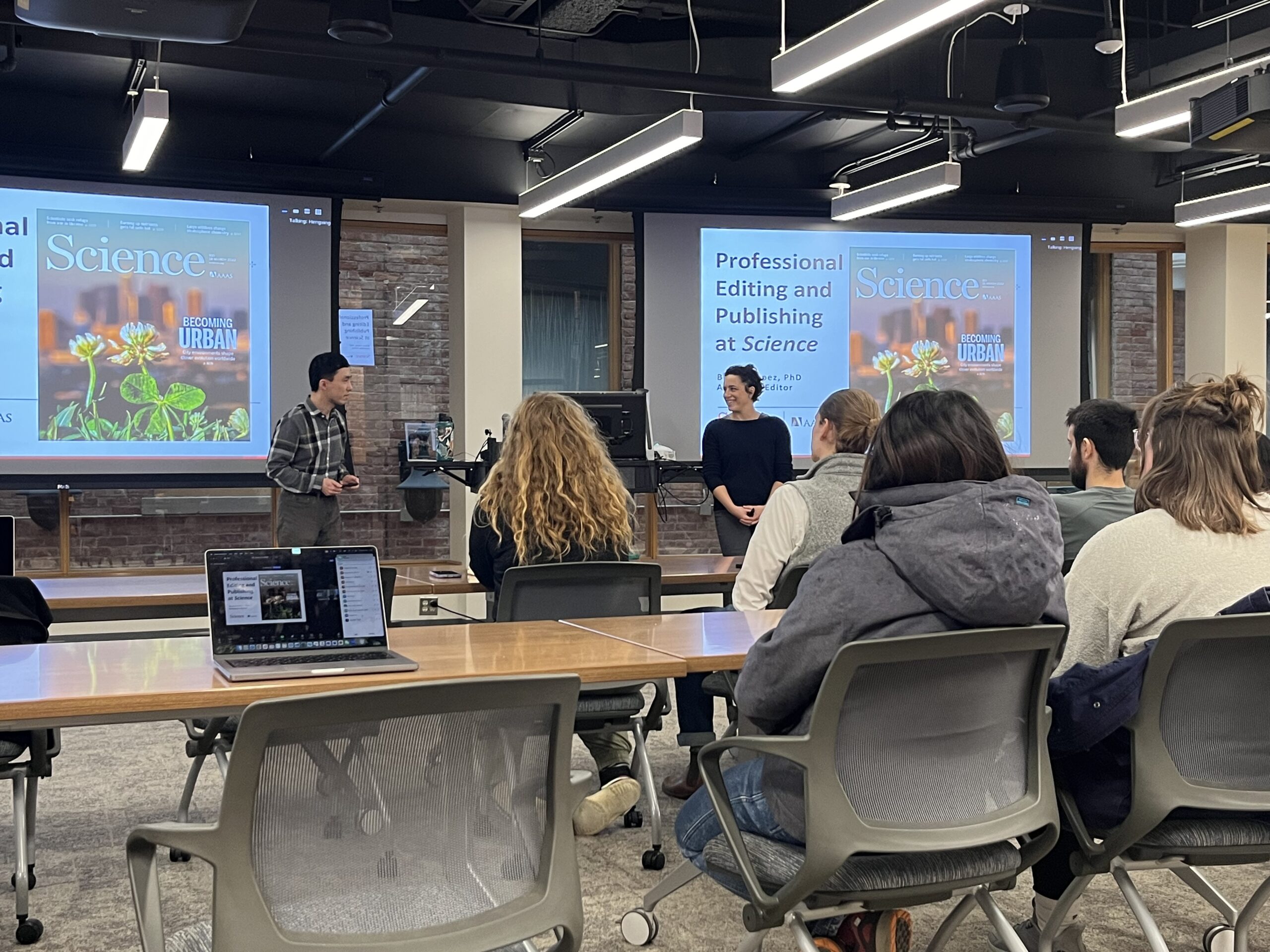Study: Ocean acidification already slowing coral reef growth
Experiment dials back clock to test ocean reef growth in preindustrial conditions
Albright R., Hosfelt J., Kwiatkowski L., Maclaren J.K., Mason B.M., Nebuchina Y., Ninokawa A., Pongratz J., Ricke K.L., Rivlin T., Schneider K., Sesboüé M., Shamberger K., Silverman J., Wolfe K., Zhu K., Caldeira K. (2016). Reversal of ocean acidification enhances net coral reef calcification. Nature. DOI 10.1038/nature17155
News release below (Rice link here).
Jade Boyd/Rice University
HOUSTON — (Feb. 25, 2016) — An international team of scientists from the Carnegie Institution for Science, Rice University and other institutions has performed the first experiment to manipulate seawater chemistry in a natural coral-reef community to determine the effect that excess carbon dioxide released by human activity is having on coral reefs.
The research, which is published in this week’s issue of Nature, was conducted in a lagoon on the southern Great Barrier Reef in Australia in 2014. By controlling the alkalinity on a portion of the reef, the team was able to examine how fast the reef is growing today and compare that with growth rates in less acidic conditions that existed prior to the Industrial Revolution.
By controlling the alkalinity on a portion of the Great Barrier Reef, a team that included Rice University BioSciences researcher Kai Zhu was able to examine how fast the reef is growing today and compare that with growth rates in less acidic conditions that existed prior to the Industrial Revolution.
“Our work provides the first strong evidence from experiments on a natural ecosystem that ocean acidification is already causing reefs to grow more slowly than they did 100 years ago,” said study lead author Rebecca Albright, a marine biologist in Carnegie’s Department of Global Ecology in Stanford, Calif. “Ocean acidification is already taking its toll on coral reef communities. This is no longer a fear for the future; it is the reality of today.”
The research team included Rice’s Kai Zhu, an expert in ecological statistics who joined Rice as a Huxley Faculty Fellow in the Department of BioSciences in January following a postdoctoral appointment at Carnegie’s Department of Global Ecology.
“The data analysis for the experiment was complicated by the natural variation of conditions in the reef,” Zhu said. “Statistically speaking, there was a great deal of noise in the data, and as scientists we needed to filter out the noise so that we could examine only the signal, the change in the growth rate that resulted from the change in alkalinity.”
Zhu designed a statistical model that was capable of quantifying the variation that occurred both naturally — in a portion of the reef that was measured as an experimental control — and as a result of the experiment. The data showed that the reef grew about 7 percent faster when seawater acidity approximated that of preindustrial conditions.
The carbon dioxide that is released into the atmosphere from fossil-fuel consumption acts as a greenhouse gas and negatively impacts the world’s oceans, said Carnegie’s Ken Caldeira, the study’s lead scientist. Ocean impacts of carbon dioxide are partially due to overall warming caused by climate change. But in addition, most atmospheric carbon dioxide is eventually absorbed by oceans and reacts with seawater to form an acid that is corrosive to coral reefs, shellfish and other marine life. This process is known as “ocean acidification.”
Caldeira said coral reefs are particularly vulnerable to ocean acidification, because reef architecture is built by the accretion, or buildup, of calcium carbonate through a process called calcification. Calcification becomes increasingly difficult as acid concentrations increase and the surrounding water’s pH decreases. Scientists have predicted that reefs could begin dissolving within the century if acidification continues and reefs switch from carbonate accretion to carbonate dissolution.
Previous studies have demonstrated large-scale declines in coral reefs over recent decades. Work from another team led by Caldeira found that rates of reef calcification were 40 percent lower in 2008 and 2009 than they were during the same season in 1975 and 1976. But it has been difficult to pinpoint exactly how much of the decline is due to acidification and how much is caused by warming, pollution and overfishing.
In the current study, the team manipulated the alkalinity of seawater flowing over a reef flat off Australia’s One Tree Island. They brought the reef’s pH closer to what it would have been in the preindustrial period based on estimates of atmospheric carbon dioxide from the era. They then measured the reef’s calcification in response to this pH increase. They found that calcification rates under these manipulated preindustrial conditions were about 7 percent higher than they are today.
Caldeira said some researchers have proposed increasing the alkalinity of ocean water around coral reefs through geoengineering to save shallow marine ecosystems. The results of the new study show that this idea could be effective, but he said it would likely be impractical to implement on all but the smallest scales.
“The only real, lasting way to protect coral reefs is to make deep cuts in our carbon dioxide emissions,” Caldeira said. “If we don’t take action on this issue very rapidly, coral reefs — and everything that depends on them, including both wildlife and local communities — will not survive into the next century.”
Additional study co-authors include Carnegie’s Lilian Caldeira, Lester Kwiatkowski, Jana Maclaren (also of Stanford University), Yana Nebuchina, Julia Pongratz (now at Max Planck Institute for Meteorology), Katharine Ricke, Kenny Schneider (now at The Hebrew University of Jerusalem) and Marine Sesboue; as well as Jessica Hosfelt and Aaron Ninokawa of the University of California, Davis; Benjamin Mason of Stanford University; Tanya Rivlin of the Hebrew University of Jerusalem; Kathryn Shamberger of both Woods Hole Oceanographic Institution and Texas A&M University; and Kennedy Wolfe of the University of Sydney.
The research was supported by the Carnegie Institution for Science and the Fund for Innovative Climate and Energy Research.



